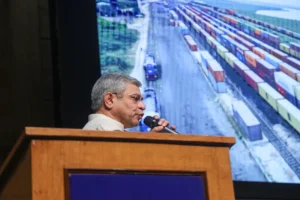
The recent results of the assembly elections in four states mark nothing short of a political miracle. The Bhartiya Janata Party (BJP), led by Prime Minister Narendra Modi, has maintained the ‘rivaaz’, the political tradition of change of guard every five years, while starting a new precedent in Madhya Pradesh and Chhattisgarh. This outcome has surprised both the opposition and numerous political pundits.
The results underscore that Prime Minister Modi’s popularity in the Hindi belt of North India is not only unscathed but is now devoid of any lingering doubts. This development is so decisive that it unequivocally strengthens Narendra Modi’s claim for a third consecutive term as Prime Minister.
Leading up to the 2024 Lok Sabha elections, the BJP currently governs 12 states: Uttarakhand, Haryana, Uttar Pradesh, Gujarat, Goa, Assam, Tripura, Manipur, Arunachal Pradesh, Madhya Pradesh, Rajasthan, and Chhattisgarh. In four of these states, the BJP is part of the ruling coalition. These BJP-ruled states collectively cover 58% of the country’s area and account for 57% of the population.
The decisive majority victory in the three states can be attributed to various local factors, but the central element undoubtedly lies in the Prime Minister’s popularity and the steadfast trust voters place in him. The extensive implementation of welfare schemes under the Prime Minister’s guidance serves as a robust shield in every election, rendering opposition strategies ineffective. Free rations, cash disbursements to the poor, farmers, and women, affordable housing, toilets, cylinders, etc., have proven to be electoral antidotes to inflation, unemployment, and the growing challenges in the agricultural sector.
It is widely believed that the proper execution of these schemes fosters a connection between voters and the government, while any form of negligence or leakage becomes a source of dissatisfaction. However, consecutive election results emphasize that Modi’s influence on poor voters and the working class remains unaltered. The BJP, initially perceived as a supporter of the forward castes and an urban-centric party in its early years, has solidified its presence in every section of society over the last nine to ten years.
The amalgamation of welfare policies with strategic electoral tactics played a crucial role in the BJP’s triumph. In addition to constructing an extensive social coalition based on policies, the BJP secured victory by fielding numerous senior central leaders and MPs as candidates, fully leveraging its organizational capacity extended down to the booth level.
In comparison to the cadre-based BJP, the organizational structure of the Congress has perennially exhibited weakness. Taking Rajasthan as an example, even with all the welfare initiatives of the Gehlot government, the BJP’s organization outperformed the Congress in reaching voters amidst local anti-incumbency sentiments, concerns about law and order, and women’s safety issues.
In Madhya Pradesh, despite a sense of weariness after nearly two decades of government, the organization effectively prevented cadre disillusionment by sustaining continuous communication and coordination with the government.
In Chhattisgarh, despite perceived organizational shortcomings, the BJP strategically tilted the results in its favor by concentrating on booth-level management.
The results indicate that the opposition’s call for a nationwide caste census to appeal to OBC votes had minimal impact in the Hindi belt states. Instead of the anticipated advantage, it appears to have resulted in counter-polarization, particularly in tribal-majority Chhattisgarh, where the BJP secured most of the tribal seats. In the Bastar and Sarguja divisions, contributing 26 MLAs to the Chhattisgarh Assembly, the Congress had clinched 25 of the total 26 seats in the 2018 elections. This time, the Congress only managed to secure three seats here.
Conversely, the approval of the Women’s Reservation Bill, aiming for 33% reservation for women in Parliament and Assemblies, indicates the BJP gaining support from women voters, particularly through the Ladli Bhahna scheme in Madhya Pradesh.
Similar to the trend observed in tribal seats, a shift in favor of the BJP was evident in the reserved constituencies for Scheduled Castes. Of the 98 Scheduled Caste seats in Madhya Pradesh, Rajasthan, Chhattisgarh, and Telangana, the BJP won 57 seats, while the Congress secured victory in 40 seats. In 2018, the BJP had won 32 of these seats, and the Congress had secured 45 seats.
In contrast to past assembly elections, where voters traditionally differentiated between assembly and Lok Sabha elections, the BJP achieved positive results in the assembly elections by leveraging factors that previously favored it in the general elections. For instance, in the 2018 assembly elections, the BJP lost all three states when it projected local leadership as the face of the campaign. However, this time, the BJP did not present a specific face in the three states; instead, it campaigned on the name of Prime Minister Narendra Modi, succeeding by infusing a Lok Sabha election essence into the assembly elections. Throughout the assembly elections, the BJP centered its entire campaign around Narendra Modi, who vehemently criticized the Congress on its election guarantees, positioning himself as a leader who has delivered on commitments to fulfill the aspirations of the common man.
The Prime Minister’s tireless efforts also played a significant role in the BJP’s victory. Following the announcement of the elections, he addressed 14 rallies each in Rajasthan and Madhya Pradesh, along with five rallies in Chhattisgarh. Additionally, he conducted two road shows in Rajasthan and a substantial road show in Madhya Pradesh. These high-intensity campaigns effectively contributed to creating a favorable electoral atmosphere in favor of the BJP.
Moreover, Amit Shah’s contribution provided the campaign with the advantage that eluded the opposition. Amit Shah personally assumed the responsibility for Chhattisgarh and Madhya Pradesh, two states where the likelihood of BJP’s victory was gradually diminishing. Through his diligent efforts and astute political acumen, he evaluated the conditions of the weary and demoralized organization in Chhattisgarh and the party grappling with intense internal conflicts in Madhya Pradesh. Subsequently, he devised a strategic plan. Initially, he instilled confidence in BJP workers from the booth level to the state headquarters, assuring them that the BJP would form the government. He then mobilized them into action, conducting numerous rallies and road shows himself. In Rajasthan as well, Amit Shah effectively managed the challenging issue of leadership and ensured the united efforts of the all contenders.
The challenge of maintaining unity now confronts the opposition, and these results are nothing short of a shock, particularly for the Congress, complicating the dynamics within the India Alliance. This election in the Hindi belt framed the narrative as BJP versus Congress, making it challenging for the Congress to assert control over the regional parties involved in the alliance after such a defeat. With only three states—Himachal Pradesh, Karnataka, and Telangana—remaining under its control, Congress must acknowledge that it no longer commands a widespread public base in the north. Despite Congress President Mallikarjun Kharge’s assurance that the party will overcome temporary setbacks and fully prepare for the Lok Sabha elections with its alliance partners, it is evident that the other parties will not readily accept its claim to lead the alliance.
Meanwhile, it is noteworthy that the BJP has achieved a victory hat-trick, mirroring the loss of its sole stronghold, Karnataka, to the Congress a few months after the southern state slipped from its grasp. Expressing gratitude to the workers for the triumph, the Prime Minister remarked that some had already predicted that winning the three assembly elections guarantees their third term in the center. Narendra Modi’s assurance serves as a warning for the opposition. Nevertheless, the real battle now unfolds for 2024, and given the current scenario, it appears that the opposition will need to exert more effort than its capacity allows, along with a miraculous turn of events, to harbor any hope of displacing the BJP from power.



















